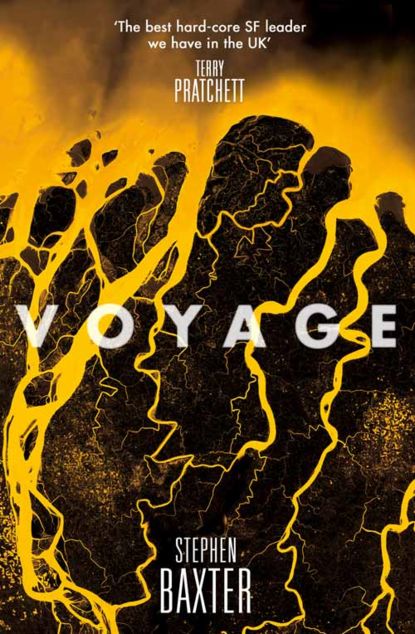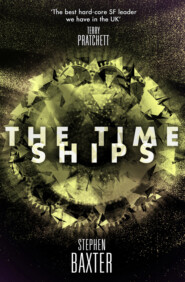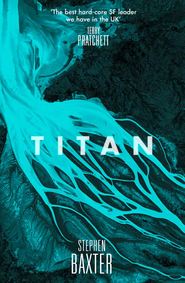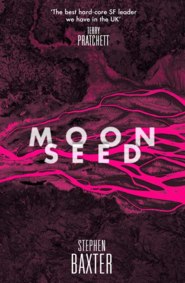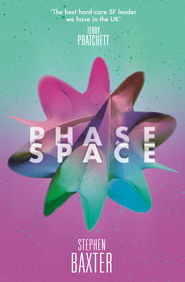По всем вопросам обращайтесь на: info@litportal.ru
(©) 2003-2024.
✖
Voyage
Автор
Год написания книги
2018
Настройки чтения
Размер шрифта
Высота строк
Поля
‘Looking good,’ Stone said.
The residual engine noise and vibration died, suddenly. The recoil was powerful. York was thrown forward again, and bounced back in her canvas restraints.
‘ECO!’ Stone called.
Engine cutoff; the MS-II stage was spent.
… And this time, the weight didn’t come back. It was like taking a fast car over a bump in the road, and never coming back down again.
‘Standing by for MS-II sep.’
There was another muffled bang, a soft jolt.
John Young said, ‘Roger, we confirm the sep, Ares.’
‘Uh, we are one zero one point four by one zero three point six.’
‘Roger, we copy, one zero one point four by one zero three point six …’
The parameters of an almost perfect circular orbit about the Earth, a hundred miles high.
Phil Stone’s voice was as level as Young’s. Just another day at the office. But now, the stack he commanded was moving at five miles per second.
York gazed at the glistening curvature of Earth, the crumpled skin of ocean, the clouds layered on like whipped cream.
I’m in orbit. My God. She felt a huge relief that she was still alive, that she had survived that immense expenditure of energy.
Above her head, the little cosmonaut was floating, his chain slack and coiling up.
Sunday, July 20, 1969 Tranquillity Base
Joe Muldoon peered through the Lunar Module’s triangular window.
Muldoon was fascinated by the play of light and color on the lunar surface. If he looked straight ahead, to the west, away from the rising sun, the flat landscape reflected back the light in a shimmering golden brown sheen. But to either side there was a softer tan. And if he leaned forward to look off to the side, away from the line of the sun, the surface looked a dull ash gray, as if he was looking through a polarizing filter.
Even the light here wasn’t Earth-like.
Outside, Armstrong was moving about with what looked like ease, bouncing across the beach-like lunar surface like a balloon. His white suit gleamed in the sunlight, the brightest object on the surface of the Moon, but his lower legs and light blue overshoes were already stained dark gray by dust. Muldoon couldn’t see Armstrong’s face, behind his reflective golden sun-visor.
He checked the time. It was fourteen minutes after the commander’s egress.
‘Neil, are you ready for me to come out?’
Armstrong called back. ‘Yes. Just stand by a second. First let me move the LEC over the edge for you.’
Armstrong floated about the LM, pushing aside the LEC, the crude rope-and-pulley Lunar Equipment Conveyor which Muldoon had been using to pass equipment down to his commander on the surface.
Muldoon turned around in the evacuated cabin and got to his knees. He crawled backwards, out through the LM’s small hatch, and over the porch, the platform which bridged to the egress ladder fixed to the LM’s front leg. The pressurized suit seemed to resist every movement, as if he were enclosed in a form-fitting balloon; he even had trouble closing his gloved fingers around the porch’s handles.
Armstrong guided him out. ‘Okay, you saw what difficulties I was having. I’ll try to watch your PLSS from underneath here. Your PLSS looks like it’s clearing okay. The shoes are about to come over the sill … Okay, now drop your PLSS down. There you go, you’re clear and spidery, you’re good. About an inch of clearance on top of your PLSS.’
When he got to the ladder’s top rung, Muldoon took hold of the handrails and pulled himself upright. He could see the small TV camera, sitting on its stowage tray hinged out from the LM, which Armstrong had deployed to film his own egress. The camera watched him silently. He said, ‘Now I want to back up and partially close the hatch. Making sure I haven’t left the key in the ignition, and the handbrake is on …’
‘A particularly good thought.’
‘We’d walk far to find a rental car around here.’
He was ten feet or so above the lunar surface, with the gaunt planes of the LM’s ascent stage before him, the spider-like descent stage below. ‘Okay, I’m on the top step and I can look down over the pads. It’s a simple matter to hop down from one step to the next.’
‘Yeah,’ Armstrong said. ‘I found it to be very comfortable, and walking is also very comfortable. Joe, you’ve got three more rungs and then a long one.’
‘I’m going to leave one foot up there and move both hands down to the fourth rung up …’
It was routine, like a sim in the Peter Pan rig back at MSC. He didn’t find it hard to report his progress down the ladder to Houston.
But once he was standing on Eagle’s footpad, he found words fleeing from him.
Morning on the Moon:
Holding onto the ladder, Muldoon turned slowly. His suit was a warm, comforting bubble around him; he heard the hum of pumps and fans in the PLSS – his backpack, the Portable Life Support System – and he felt the soft breeze of oxygen across his face.
The LM was standing on a broad, level plain. There were craters everywhere, ranging from several yards to a thumbnail width, the low sunlight deepening their shadows. There were even tiny micrometeorite craters, zap pits, punched in the sides of the rocks littering the surface.
There were rocks and boulders scattered about, and ridges that might have been twenty feet high – but it was hard to judge distance, because there were no plants, no buildings, no people to give him any sense of scale: it was more barren than the high desert of the Mojave, with not even the haze of an atmosphere, so that rocks at the horizon were just as sharp as those near his feet.
Muldoon was overwhelmed. The sims – even his previous spaceflight in Earth orbit on Gemini – hadn’t prepared him for the strangeness of this place, the jewel-like clarity about the airless view, with its sharp contrast between the darkness of the sky and the lunar plain beneath, jumbled with rocks and craters.
Holding the ladder with both hands, Muldoon swung his feet off the pad and onto the Moon.
It was like walking on snow.
There was a firm footing beneath a soft, resilient layer a few inches thick. Every time he took a step a little spray of dust particles sailed off along perfect parabolae, like tiny golf balls. He understood how this had implications for the geology: no atmospheric winnowing here, no gravitational sorting.
In some of the smaller zap craters he saw small, shining fragments, with a metallic sheen. Like bits of mercury on a bench. And here and there he saw transparent crystals lying on the surface, like fragments of glass. He wished he had a sample collector. He would have to remember to come back for these glass beads, during the documented sampling later.
His footprints were miraculously sharp, as if he’d placed his ridged overshoes in fine, damp sand. He took a photograph of one particularly well-defined print; it would persist here for millions of years, he realized, like the fossilized footprint of a dinosaur, to be eroded away only by the slow rain of micrometeorites, that echo of the titanic bombardments of the deep past.
Muldoon’s job now was to check his balance and stability. He did turns and leaps like a dancer. The pull of this little world was so gentle that he couldn’t tell when he stood upright, and the inertia of the PLSS at his back was a disconcerting drag at his changes of motion.
‘… Very powdery surface,’ he reported back to Houston. ‘My boot tends to slide over it easily … You have to be careful about where your center of mass is. It takes two or three paces to bring you to a smooth stop. And to change direction you have to step out to the side and cut back a little bit. Like a football player. Moving your arms around doesn’t lift your feet off the surface. We’re not quite that light-footed …’
There was a pressure in his kidneys. He stood still and let go, into the urine collection condom; it was like wetting his pants. Well, Neil might have been the first man to walk on the Moon. But I’m the first to take a leak here.
He looked up. A star was climbing out of the eastern sky, unblinking, hauling its way toward the zenith, directly over his head. It was Apollo, waiting in orbit to take him home.
Armstrong peeled away silver plastic and read out the inscription on the plaque on the LM’s front leg. ‘First, there’s the two hemispheres of the Earth. Underneath it says, “Here Man from the planet Earth first set foot upon the Moon, July 1969A.D. We came in peace for all mankind.” It has the crew members’ signatures and the signature of the President of the United States.’
They unfurled the Stars and Stripes. The flag had been stiffened with wire so it would fly here, without any wind.





